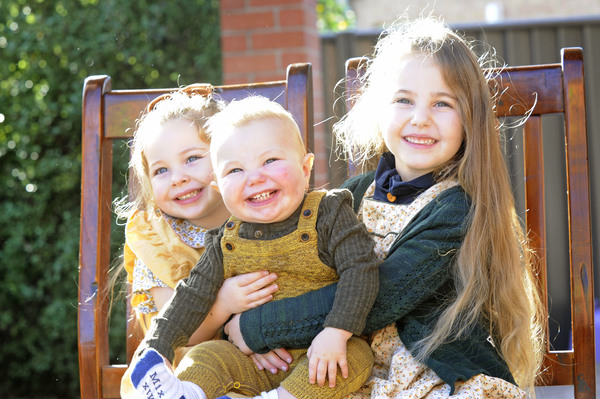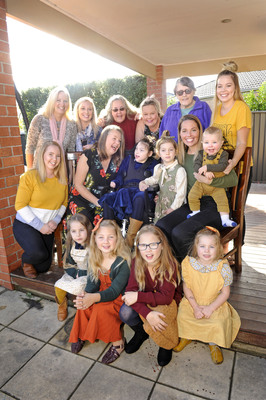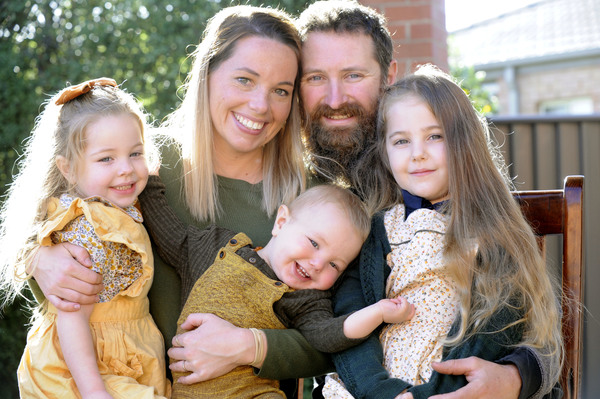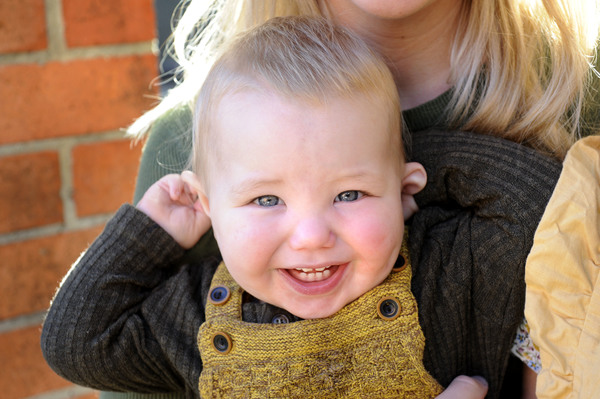By Melissa Grant
In the seconds after giving birth to her third child, Belinda Denney couldn’t stop looking down as she pulled her newborn close to her chest.
It was a moment she and her family thought would never arrive, so she had to be sure she wasn’t just imagining it.
Still on the hospital ward floor after a six-hour labour, tears of joy began streaming down Belinda’s face as she realised something truly remarkable had indeed just happened.
“It was super emotional. I was the first to see,” Belinda recalled.
“I looked down three times to check and process it. I was like ‘it’s not a boy, oh it’s a boy, it’s a boy!’
“I looked up to (my husband) Tom and he just broke down in tears. There were midwives crying as they knew the story as well.”
The story was that a baby boy had not been born on Belinda’s maternal side of the family for more than a century.
After 17 girls and a number of miscarriages over four generations, Jack Thomas Denney entered the world on 3 May, 2017.
Belinda and her husband Tom had decided not to find out the gender during the pregnancy, as they had done with their two girls Harlie, 5, and four-year-old Indie.
However, keeping the sex a secret until the birth was much harder as this time the Pakenham couple had taken steps to conceive a boy.
They only decided to try after seeing a geneticist, amid concerns there was a reason there had been no males born Belinda’s family since her grand uncle.
The grand uncle (Belinda’s nanna’s older brother) was born in 1910, which means Jack is the first boy in the family for 107 years.
The geneticist told the Denneys there was a chromosomal issue, although this wasn’t the reason why no boys had been born for generations.
The couple wondered whether it was actually a good idea to try for a boy.
“I was nervous trying for a boy because in our minds the boys were the miscarriages. We were really nervous – should we try it and risk a miscarriage?” Belinda said.
“In the end, we thought we’ll do it – we’ll see what happens.”
Belinda and Tom researched at length how they could boost their chances of conceiving a boy.
The couple came across a variety of methods, from ones which boasted high rates of success to the downright wacky.
In the end, the Denneys settled on the Shettles Method, a concept which claims the timing of intercourse can help determine a baby’s gender. The method was developed in the 1960s by Dr Landrum B Shettles, who believed Y (male) sperm were faster but more fragile than X (female sperm) and that acidic environments were harmful to Y sperm. So, he believed conceiving a boy was more likely to occur when the deed happened on the day of ovulation or shortly afterwards.
Apparently caffeine makes the swimmers go even faster, so Tom founding himself knocking back shots of coffee.
A diet high in potassium is also said to improve a woman’s chances of conceiving a boy, so Belinda started eating a lot of bananas, broccoli and brussels sprouts while avoiding dairy.
The Denneys weren’t convinced any of these methods would actually work, but thought they would be fun to try.
“These are all just claims. There’s no scientific evidence these things will give you a boy,” Belinda said.
“We were happy either way with a boy or a girl.”
The couple fell pregnant quickly and soon enough Belinda got an inkling that she may be carrying a son.
The pregnancy was much different to that of her girls. This time, she was carrying lower and rounder, experienced morning sickness, had a very active baby and didn’t put on much extra weight.
All was going to plan until the baby’s movements slowed around 30 weeks and Belinda was sent in for an ultrasound.
Belinda explained to the sonographer why she didn’t want to know the baby’s sex, yet moments later the baby’s gender appeared to jump out on the screen.
“He went across the stomach and I saw a penis!” she recalled.
Although Belinda’s sister, Leanne, saw the same thing, she didn’t want to get her hopes up.
“I didn’t let it overtake my thoughts and I only told my mum and Tom,” Belinda said.
“I kept telling myself it was the umbilical cord.”
In case it wasn’t the umbilical cord, Belinda organised a photographer to capture the birth.
Belinda, a photographer herself, didn’t go into labour until about a week after her due date, but it was worth the wait. She had her boy.
The excitement didn’t end there, with the couple wrapping up Jack in a gender neutral blanket so they could surprise family and friends who visited the hospital.
“A couple of friends were so excited they jumped up and down,” Belinda recalled.
Jack weighed 8lb 11oz – smaller than both of the couple’s daughters.
Looking back on the pregnancy, Belinda said it was funny they couldn’t decide on a girl’s name but only ever had one name for a boy.
Belinda wanted to name her son after her grandfather Jack Thomas, which was fitting given the first-born son in her husband Tom’s family is traditionally given the father’s name as a middle name.
More than a year later, the Denneys still can’t believe they have a son.
“We all just look at Jack and go ‘wow how blessed are we to have him?’”











